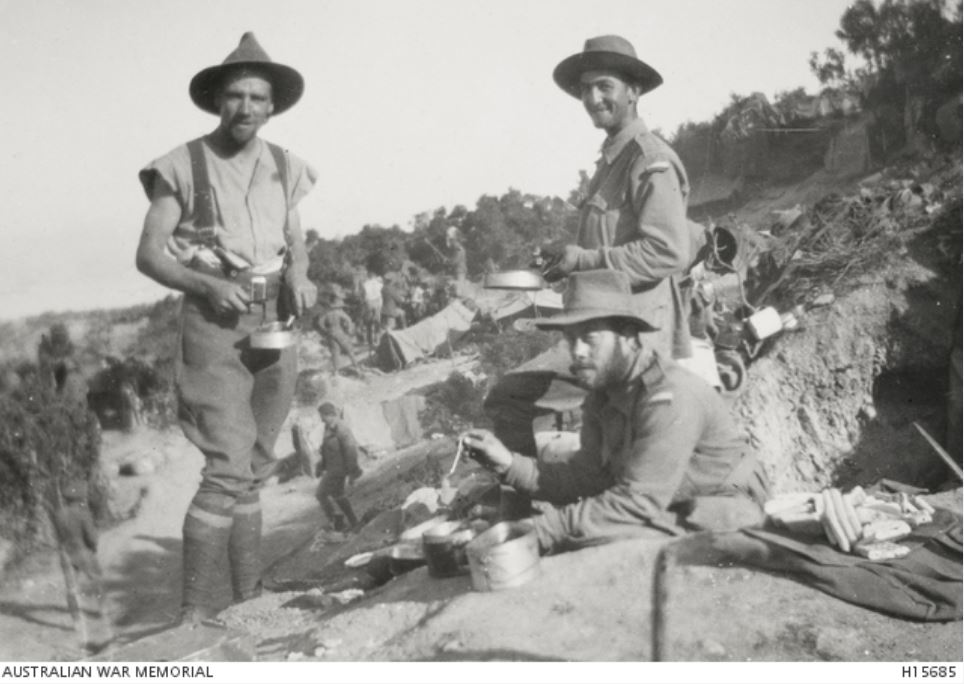4th Battalion
From Our Contribution
 Shoulder patch | |
 4th Battalion troops at the top of Shrapnel Gully having breakfast from their dixies just behind the battalion lines. AWM photo H15685 | |
Contents
Brief History
The 4th Battalion was raised in New South Wales within two weeks of the war commencing, with the majority of its men coming from inner Sydney suburbs, and a few from regional NSW. It was to become part of the 1st Brigade, attached to the 1st Division. Many of the men came from existing Militia Units. Following two months training at Randwick, it was a part of the first convoy of troops that left our shores. After they had left Australia they were redirected to Egypt to complete their training there rather than on the overcrowded, cold Salisbury Plain in southern England.
In Egypt the battalion participated in the defence of the Suez Canal before taking part in the landing at Anzac Cove on the Gallipoli Peninsular, where they were part of the second and third waves to land. They participated in the August attempt to break out from their narrow beach head, participating in the Battle for Lone Pine. With its failure they settled down to defensive tasks until the withdrawal in December 1915.
Returning to Egypt, they were soon transferred to France. Here their first involvement was at Poziéres in July 1916, before spending time in Belgium near Ypres. They spent the winter of 1917-18 in the Somme and were there to play a role in stopping the German advance on Amiens.
Switching to the offensive after the German attacks failed, they participated in the Hundred Days Offensive, playing a role until being spelled in late September 1918. The men returned to Austrtalia in drafts over the period November 1918 to May 1919 for demobilisation.
During the war, the battalion suffered 3,485 casualties, of which 1,203 were killed
Battalion Personnel
- Sydney Clarence Owen Matthews 14 Oct 1914 - 11 May 1915 (KIA Shrapnel Gully, Gallipoli)
Battle Honours
- ANZAC
- Landing at ANZAC
- Defence at ANZAC
- Suvla
- Sari Bair–Lone Pine
- Somme 1916
- Somme 1918
- Pozieres
- Bullecourt
- Ypres 1917
- Menin Road
- Polygon Wood
- Broodseinde
- Poelcappelle
- Passchendaele
- Lys
- Hazebrouck
- Amiens
- Albert 1918 (Chuignes)
- Hindenburg Line
- Epehy
- France and Flanders 1916–1918.[
Individual Honours
- 2 Companions of the Order of St Michael and St George
- 5 Distinguished Service Orders with one Bar
- 28 Military Crosses with one Bar
- 20 Distinguished Conduct Medals with one Bar
- 125 Military Medals with four Bars
- 7 Meritorious Service Medals
- 68 Mentions in Despatches, and
- 7 foreign awards
Notes
Content for the history and honours sections has come from a combination of Wikipedia and the Australian War Memorial websites.